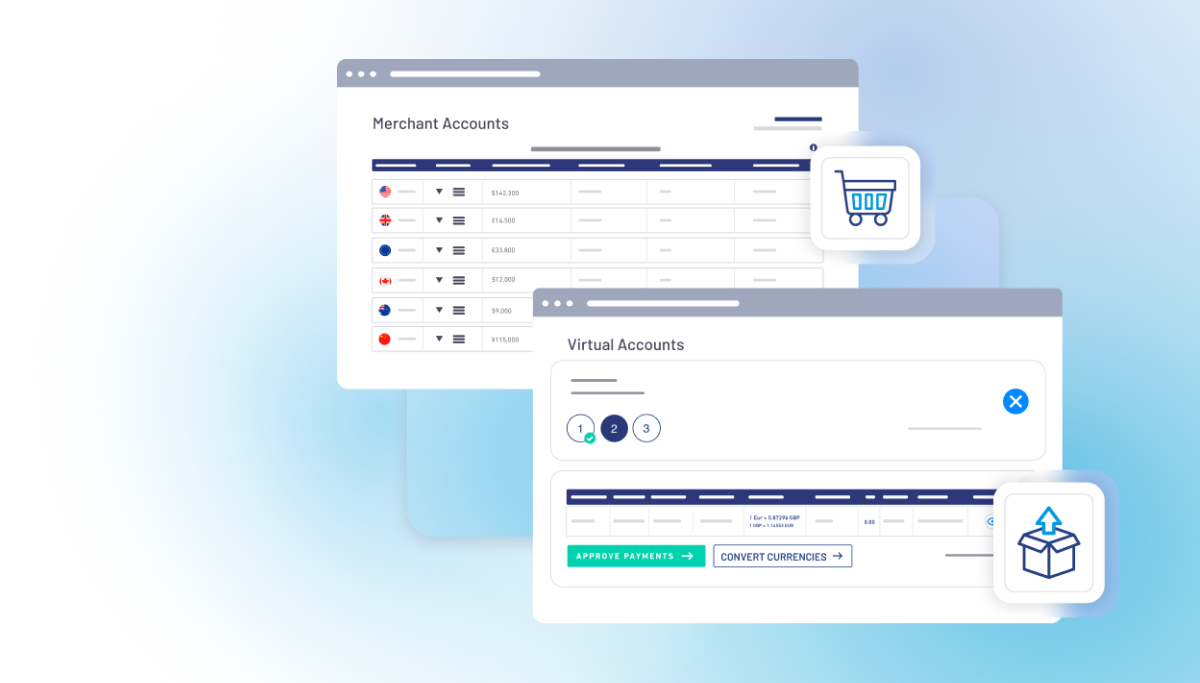There’s a lot of paperwork when it comes to international payments. When we click that ‘pay vendor’ button, we imagine the technology as a whir of automated processes, seamlessly figuring out exactly what it should (and shouldn’t) be doing.
In short, we imagine slick US cop shows where the protagonists have all the information in the world by waving at a touchscreen, not the Scandinavian ones where the best tool the lead detective has is a nice woolly jumper.
One area where paperwork has been a real friction point is the sharing of information between financial institutions to create smoother services for customers.
The challenge of sharing financial information with third-party providers
It’s a very legitimate and serious question to tackle – how can financial institutions securely share customer information with third parties?
Previously (and still the case in a lot of areas) customer information could not be shared with a third-party without a lot of paperwork being completed. This is obviously for very good reasons; just because a business or individual trusts a particular financial institution with their finances and information, it doesn’t mean they would trust another.
This did lead to serious friction in the financial chain. It was a particularly major hindrance in collaboration between financial institutions.
Two or more parties could come together and create a great idea, build a platform to deliver it, but then find it impossible to bring it to the marketplace because they couldn’t share their customer data. The only way it was possible was an onerous onboarding process where each individual customer would have to work with the two parties and give over swathes of information.
The solution was ‘Open Banking’ – the first industry term we’ll hit today.
Open banking first emerged in the United Kingdom in 2018, when the government passed a law requiring banks to provide customers with access to their financial data in a secure way. On the flip side, it also allowed banks themselves to share information with regulated third parties.
This was only possible through the use of Application Programming Interfaces (APIs), which basically use pieces of code so two pieces of software can communicate with each other. In the case of open banking, APIs allow customers to share their financial data with third-party providers, such as fintech’s, who can then use that data to create new services and products.
To boil it down, open banking allowed that onboarding process to be reduced dramatically to a couple of key pieces of information, such as:
- Your account information & balances
- Your beneficiaries
- Any direct debits and standing orders you have set-up
- Data about transactions you make
- Details of any products you have.
The primary ethos was to come at the information sharing from the angle of the customer; the customer must proactively agree to the information sharing.
This allowed financial institutions to contact their customer and say ‘we have this new solution in collaboration with this third-party, would you like to sign up to it and, if so, can we share this information with them to make it happen?’
What started as ‘Open Banking’ has morphed into ‘Open Finance’ – the second term we’ll hit today - because the thinking (and laws) behind it went way beyond the banks and into all regulated institutions in the financial ecosystem.
4 benefits of ‘Open Finance’ for financial institutions and their customers
While this all seems very process driven and, well, dry, open finance is having a massive impact on how the global financial system operates and how customers (both individuals and businesses) will experience it in the future.
How will that experience change? Let’s look at a couple of key points.
1. Increasingly personalized services for customers

Open finance allows financial institutions to leverage customer data to offer personalized services. For example, if you are a business in the US regularly making and receiving payments into Europe, you may be using a national bank (or software like an expense platform that leverages that banks’ payment rails) that doesn’t have a presence in the US.
This means your business will experience higher fees and slower, less transparent service.
With Open Finance, that bank or software provider can partner with a regulated third-party in Europe (let’s say a fintech like TransferMate), embed the fintech’s capabilities into their services through API integrations, and then simply ask their customer if they want to ‘switch-on’ the service and receive the benefits.
The financial institution in the US is able to offer a better, lower cost service, the fintech third-party in Europe benefits from increasing money flows through their architecture, and the customers benefits from that better, lower cost service.
There are countless other types of examples like this, but fundamentally it’s all about collaborating openly to remove friction points and create win-wins all around.
2. Enhancing customer experience with faster, more cost-effective payments

In the example above, we mention how open finance can result in lower-cost payments, but it’s worth diving in to the ‘why’.
With traditional correspondence banking, a payment from the US to Europe may travel through several banks and third parties before it reaches its destination. Why? Because the global financial network is actually a series of agreements between different banks to accept, and move on, each other’s money.
If you are sending a payment from a local bank in Missouri, for example, they may have to utilise an agreement they have with a national bank based in New York which has links to another national bank in Paris, which then has an agreement with a local bank in Marseille.
At each point in the chain, that handler may take a cut of the money (which translates into those bank transaction fees) and charge FX commissions on the payment as well. Beyond the expense, this can often result in that payment made in Missouri having a shortfall when it lands in Marseille, leaving to friction between the two parties, follow-up payments and annoying reconciliation down the road for both finance teams.
Open finance eliminates all that by making payments direct from A-B through open collaboration, removing significant pain-points when moving money around the world.
3. Improved security

Without security and strong regulation, nothing works in finance. We’ve seen in the crypto world over the past year that without it, the whole infrastructure can end up sinking into the quicksand it was built on.
Open finance utilizes strong encryption protocols and authentication processes to ensure that the customer's data is kept safe, and the customer is in control of who can access their financial data. It also requires financial institutions to adhere to strict security standards and adhere to data protection regulations.
Beyond the regulation, collaboration between banks and third parties like the fintech community has resulted in automated security systems (often led by AI technology) that can sniff out payments that are likely fraudulent, halt them, and flag them to human operators.
A note of warning, however. Any system that shares information in any way will always incorporate an element of trust. We’ve seen many examples of institutions (financial or otherwise) sharing information with unauthorized third parties. Without strong internal protocols and legislation backed-up with genuine repercussions for organizations that fail to protect their customers, the strong foundations people have built can quickly get that quicksand feeling.
4. Improved financial inclusion

Do you have a bank account? If you live in Europe, the answer is almost certainly ‘yes’.
As of 2021, only around 3.5% of the European population over the age of 15 doesn’t have a bank account. In Latin America, that figure is closer to 70%. Almost 58% of point-of-sale purchases in the continent are still made in cash.
There are obvious benefits of being ‘banked’, such as financial security, access to credit, security against risk of theft or loss etc., so reducing the number of unbanked people is a valuable societal goal.
Open finance improves financial inclusion by making banking services more accessible and affordable for more people, especially those who are underserved by traditional financial institutions. By providing access to third-party services, such as payment services, people can manage their money more efficiently and more cost-effectively.
Open Finance: a new era for customers
If we think about the services around us, and what we complained about most when it came to the customer experiences we had with them, banking and financial institutions would be right up there. Indeed, they often top the ‘worst customer satisfaction level’ surveys.
This wasn’t always because of apathy towards customers or inertia because of their dominant position (although both certainly played a role) but because of the necessary restraints put on financial institutions by the regulations in the regions where they operated.
Technology has been able to break down the concerns and satisfy the lawmakers that open finance innovations are safe and a benefit to customers.
While the days of beautiful automation and seamless processes whirring in the background without human intervention are still a while away, we can at least watch the incredible progress being made, cozy in our wooly jumpers.
If you’d like to learn how TransferMate utilizes Open Finance technology and processes to benefit our partners in financial institutions, contact the team today.








